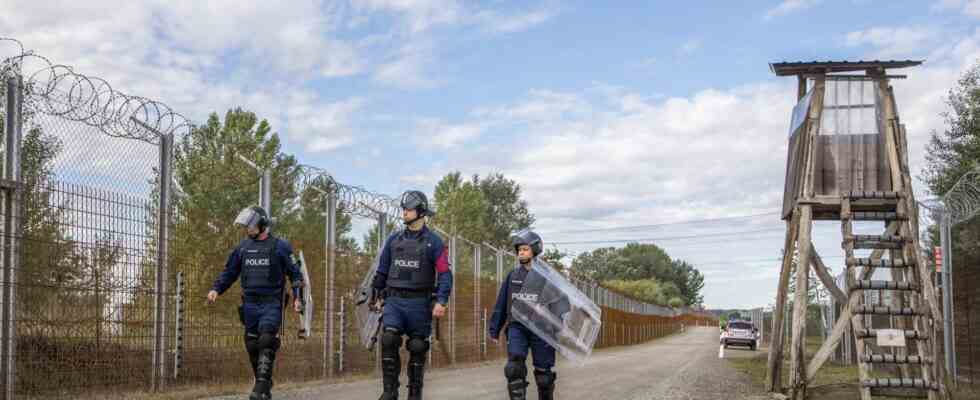background
Status: 10/14/2022 04:02 a.m
People are still traveling to the western EU on the Balkan route. Migration researchers have not yet confirmed that the situation, according to Austria, is “partly dramatic” – but warn that the countries are poorly prepared.
For four or five months, Manaf from Yemen has been stuck in the border triangle between Serbia, Romania and Hungary. The 24-year-old and several dozen other refugees are camping in a dilapidated dairy without a roof on the so-called Balkan route.
“I traveled from Yemen to Egypt to get a visa for Turkey,” he says. “I flew there and then started walking. To Greece. About a month.”
After that, the order of the countries and cities that Manaf traversed becomes blurred. In any case, he has now arrived at an external EU border again. His destination: the Netherlands. Once he and a friend tried to get to Hungary via Romania, but the police on the other side caught them, he says – and drove back to the Serbian border in their car.
100,000 people by the end of August
So there are still people on the Balkans. Several migration researchers assume that many people who were stuck because of the corona pandemic are now moving again. Exactly how many: hard to say. Because people are often picked up several times on their travels and are thus included in the statistics of several countries.
According to the UN International Organization for Migration, almost 100,000 refugees were registered throughout the Western Balkans by the end of August. Refugee treks like in 2015 are not on the way.
Nevertheless, at a meeting with his counterparts from Hungary and Austria last week, Serbian Interior Minister Aleksandar Vulin conjured up the image of the major refugee crisis: “I can tell you that the numbers have almost exploded, so that they can even be compared with the beginning of the crisis in 2015 can,” he claimed. “The pressure on our borders is enormous.”
Many asylum applications without perspective
However, Serbia is more of a stopover than a terminus – and from the EU’s point of view part of the problem: Serbia has travel agreements with several countries that allow its citizens to enter the country without a visa. Austria in particular is noticing this at the moment.
The situation is “dynamic, even dramatic,” said the local Interior Minister Gerhard Karner after his conversation with Vulin: “When we see that we had 58,000 asylum applications in the first eight months – and above all from countries that had practically no chance have asylum.”
Around a quarter of the asylum applications in Austria are currently being made by people from India and Tunisia, with no chance of success. These are countries with which Serbia has visa agreements. Serbia therefore recently promised to adapt its visa rules to those of the EU – probably by the end of the year.
“10 out of 11 refugees from Ukraine”
According to the Federal Office for Migration and Refugees, around 155,000 applications for asylum have been made in Germany so far this year, far fewer than in 2015 and 2016. At that time there were more than three to four times as many.
The situation today is therefore not comparable to that of 2015, says Austrian migration researcher Gerald Knaus, founder of the European Stability Initiative think tank:
In 2015, in twelve months, we had a million people who came irregularly from Turkey by boat to Greece on the islands and then via south-eastern Europe towards Germany. In 2022, ten out of eleven refugees who were admitted to Germany entered the European Union regularly: from Ukraine. Without a tug.”
EU badly prepared
The number of irregular arrivals via the Balkan route pales in comparison to the realistic challenge that with a possibly worsening situation in Ukraine, more people could flee from there towards Europe.
Knaus therefore advises against reacting to the situation today with the prescriptions from 2015: “Debates about border controls on the Bavarian-Austrian or German-Czech border lead to the challenge – to prepare for the largest refugee movement, the war in Ukraine triggers – completely bypass this challenge.”
So far, says the expert, the countries have been poorly prepared for the actual challenge.

